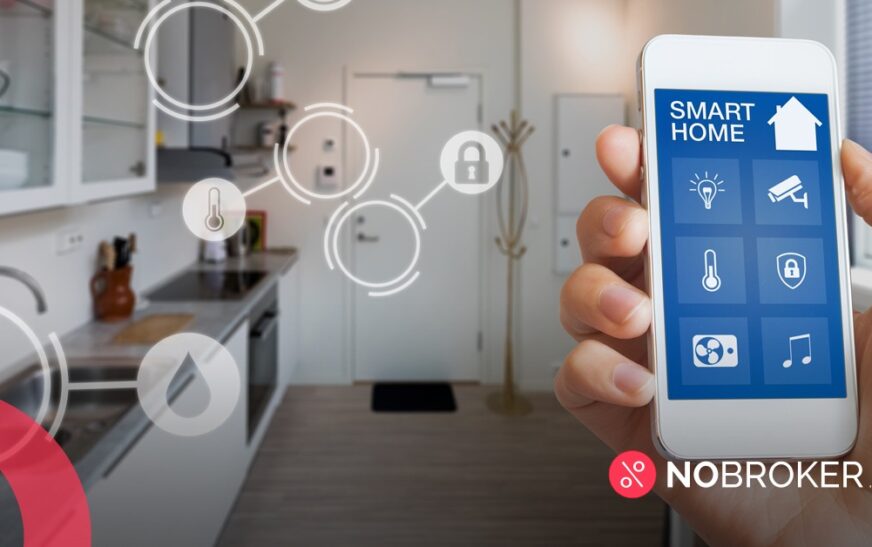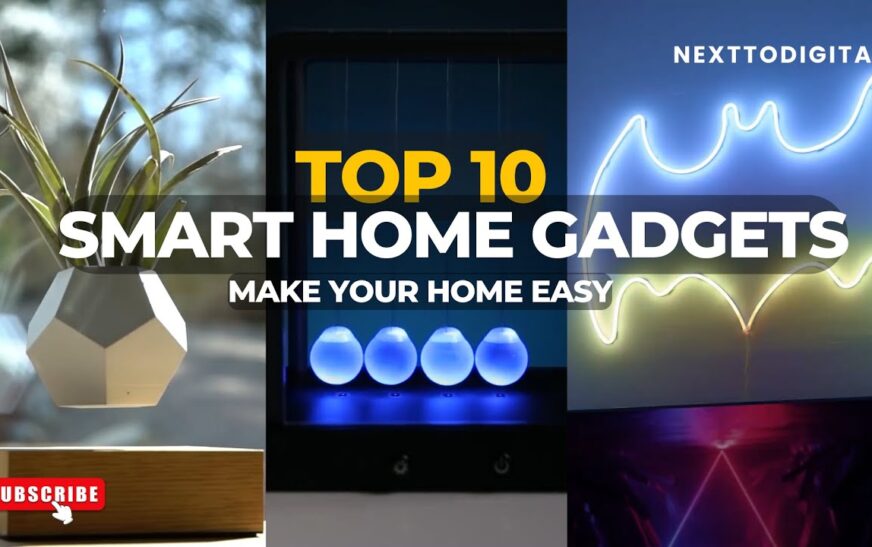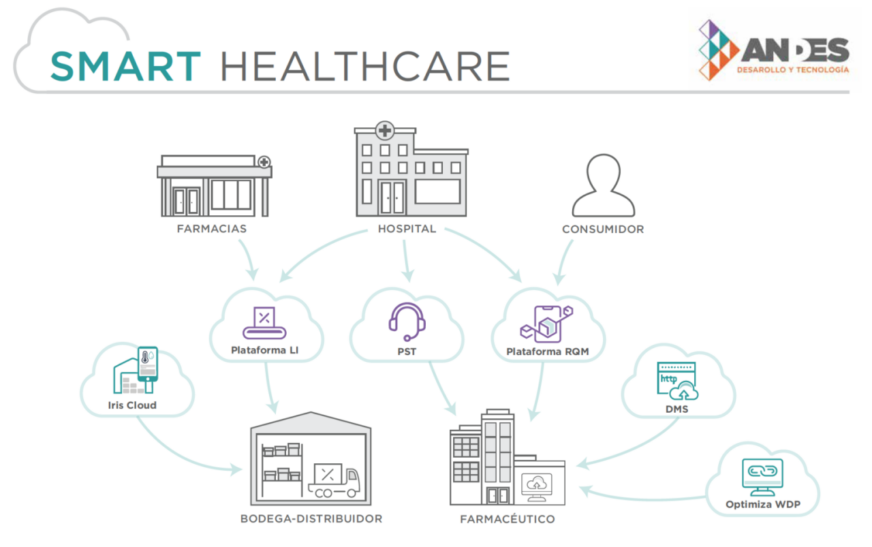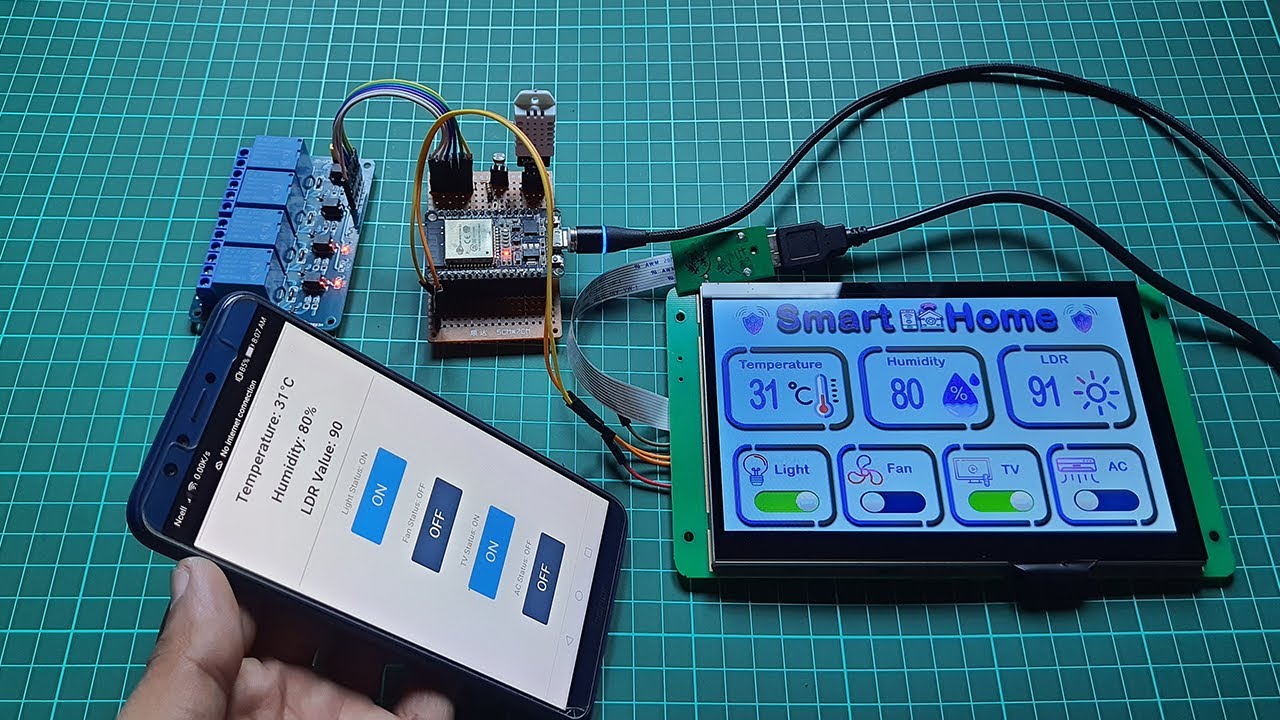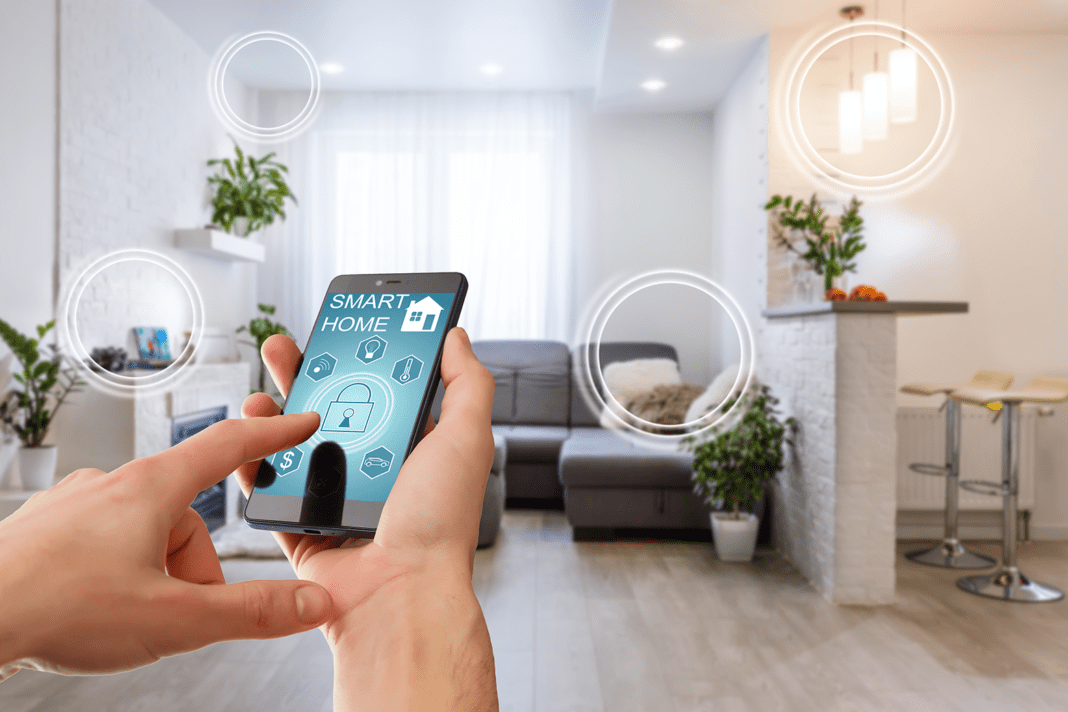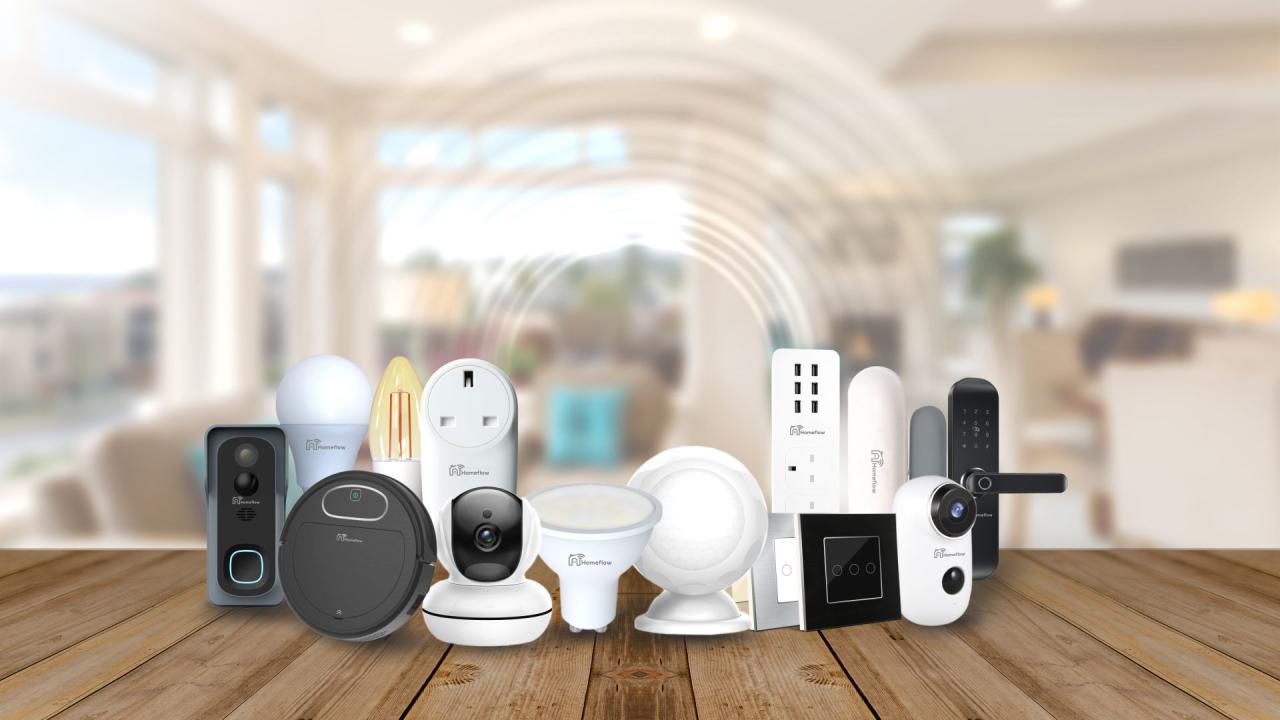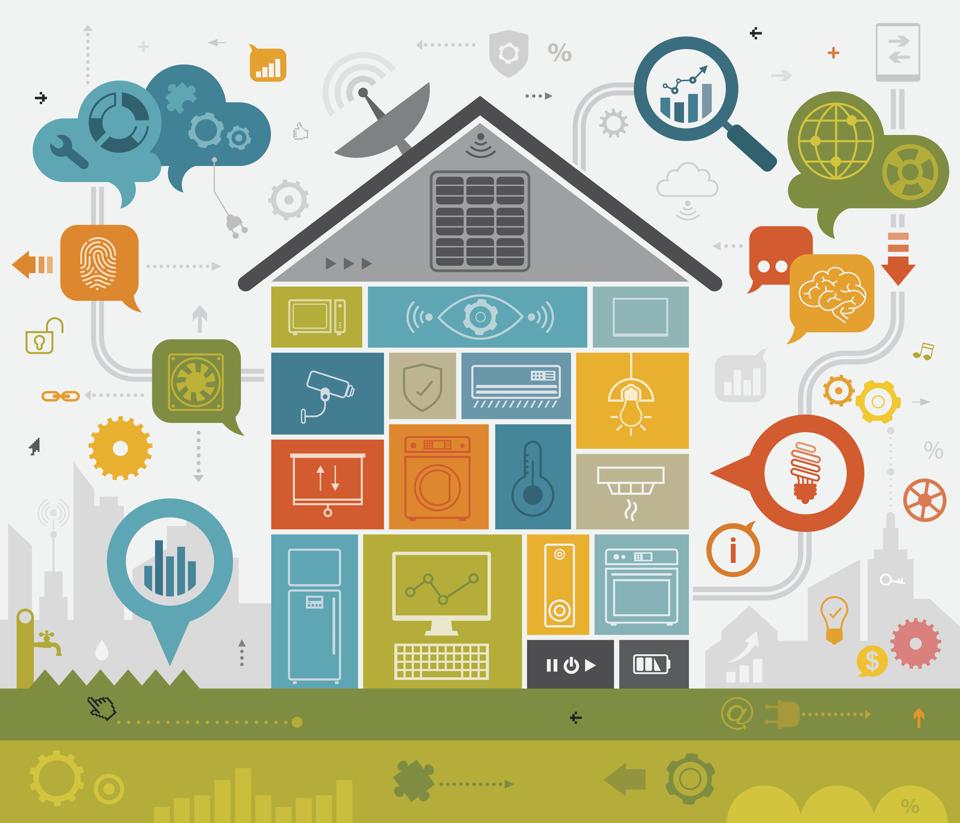Embark on a journey to discover the top smart home automation tips that will revolutionize your daily life. From convenience to energy efficiency, these tips will elevate your living space to new heights of innovation.
Learn about the essential devices, integration techniques, customization strategies, and security measures that will transform your home into a smart haven. Dive in and unlock the potential of smart technology!
Importance of Smart Home Automation
Smart home automation offers a myriad of benefits that can greatly enhance our daily lives. From increased convenience to improved efficiency, the impact of smart home technology is truly transformative.
Enhanced Convenience and Efficiency
- Smart home devices allow us to control various aspects of our homes with just a tap on our smartphones or a simple voice command, providing unparalleled convenience.
- Automation of tasks such as turning off lights, adjusting thermostats, or locking doors can save time and streamline our daily routines, increasing overall efficiency.
- Integration of smart devices like smart speakers, thermostats, and security cameras creates a cohesive ecosystem that works together seamlessly, further enhancing convenience and efficiency.
Impact on Energy Savings
- Smart home technology enables us to monitor and optimize our energy usage, leading to significant cost savings on utility bills over time.
- Features such as smart thermostats can learn our preferences and adjust heating and cooling settings accordingly, reducing energy waste and promoting sustainability.
- Automated lighting systems can turn off lights in unoccupied rooms or adjust brightness levels based on natural light, contributing to energy conservation efforts.
Essential Smart Home Devices: Top Smart Home Automation Tips
When diving into the world of smart home automation, it’s important to start with some essential devices that can greatly enhance your living experience. These devices are user-friendly and offer a wide range of functionalities to make your home smarter and more efficient.
When it comes to securing server APIs, it is crucial to implement the best practices to protect your data and maintain the integrity of your systems. You can learn more about How to Secure Server APIs to ensure that your server is well-protected against potential threats.
Smart Bulbs
Smart bulbs are a great entry point into smart home automation. They allow you to control the lighting in your home remotely through a smartphone app or voice commands. You can adjust brightness, color, and even set schedules to mimic your presence when you’re away.
Thermostats
A smart thermostat can help you save energy and money by adjusting the temperature of your home based on your habits and preferences. It can learn your schedule, detect when you’re home or away, and optimize heating and cooling settings for maximum efficiency.
Security Cameras, Top Smart Home Automation Tips
Security cameras provide peace of mind by allowing you to monitor your home remotely and receive alerts for any suspicious activity. They offer features like motion detection, two-way audio, and night vision to enhance your home’s security.
Integration and Compatibility
When setting up a smart home system, it is crucial to ensure that all smart devices are compatible with each other. Compatibility issues can lead to malfunctioning devices and a disjointed user experience.
Managing your finances effectively is essential for personal and business success. By utilizing smart tools and resources, you can streamline your financial processes and make informed decisions. Explore How to Manage Your Finances with Smart Tools to take control of your financial future.
Integrating Various Smart Devices
To integrate various smart devices within a single ecosystem, it is essential to choose devices that use the same communication protocol. This allows them to “talk” to each other and work together seamlessly. For example, devices that support Zigbee or Z-Wave protocols can usually be integrated into a single system more easily.
- Ensure all devices are compatible with your chosen smart home hub. The hub acts as a central control point for all your smart devices, allowing you to manage them from a single app.
- Follow the manufacturer’s instructions for connecting and setting up each device. This will ensure they are properly integrated into your smart home system.
- Consider using automation platforms like IFTTT (If This, Then That) to create custom integrations between different smart devices. This can enhance the functionality of your smart home system.
Role of Hubs and Protocols
Hubs play a crucial role in creating a cohesive smart home system by acting as a bridge between different devices that use different communication protocols. They allow devices to communicate with each other and with the user through a single interface.
Choosing a hub that supports multiple protocols can provide flexibility and compatibility with a wider range of smart devices.
For startups looking for the best server solutions, it is important to choose a reliable and efficient system that can support your growing business. Discover more about The Best Server Solutions for Startups to help you make the right choice for your company’s infrastructure.
- Popular smart home hubs like Samsung SmartThings, Amazon Echo, and Google Home support various communication protocols, making them versatile options for integrating different devices.
- Protocols like Wi-Fi, Zigbee, Z-Wave, and Bluetooth are commonly used in smart home devices. Understanding which protocols your devices support can help you choose the right hub for your smart home system.
- Regularly update your hub’s firmware to ensure compatibility with new devices and features. This can prevent compatibility issues and improve the overall performance of your smart home system.
Automation and Customization
Automation and customization play a crucial role in maximizing the benefits of smart home technology. By setting up automation routines for daily tasks and customizing settings based on personal preferences, you can create a truly tailored smart home experience. Let’s explore some tips and strategies to make the most out of automation and customization in your smart home setup.
Setting up Automation Routines
- Start by identifying repetitive tasks in your daily routine that can be automated, such as turning off lights at a specific time or adjusting the thermostat based on your schedule.
- Utilize smart home hubs or apps to create custom automation sequences that trigger multiple actions simultaneously, saving you time and effort.
- Experiment with different automation scenarios to find the ones that work best for your lifestyle and preferences, and don’t be afraid to make adjustments as needed.
Customizing Smart Home Settings
- Take advantage of customization options offered by smart devices to tailor settings like lighting colors, temperature levels, and security preferences to suit your individual needs.
- Explore advanced customization features that allow you to create personalized scenes or modes for different activities, such as movie night, bedtime, or hosting guests.
- Regularly review and update your smart home settings to ensure they continue to align with your evolving preferences and lifestyle changes.
Voice Control and AI Assistants
- Integrate voice control capabilities into your smart home setup to easily command devices and execute actions through simple voice commands, enhancing convenience and accessibility.
- Explore the potential of AI assistants like Amazon Alexa, Google Assistant, or Apple Siri to enhance automation capabilities and provide personalized recommendations based on your usage patterns.
- Continuously interact with your AI assistant to improve its understanding of your preferences and optimize its performance in managing your smart home ecosystem.
Security and Privacy Measures
In a smart home environment, ensuring security and privacy measures are essential to protect both your devices and personal data.
Securing Smart Home Devices
- Change default usernames and passwords on all smart devices to unique, strong credentials.
- Enable two-factor authentication whenever possible for an added layer of security.
- Regularly update device firmware to patch any vulnerabilities and protect against potential cyber threats.
- Disable features or services on devices that are not essential for your needs to minimize potential security risks.
Firmware Updates for Security
Regular firmware updates are crucial for maintaining the security of smart home devices. These updates often include security patches that address known vulnerabilities and protect against potential cyber attacks. Ignoring firmware updates can leave your devices exposed to security risks and compromise the overall security of your smart home.
Safeguarding Personal Data and Privacy
- Review and adjust privacy settings on smart devices to limit data collection and sharing.
- Use secure Wi-Fi networks with strong encryption to prevent unauthorized access to your smart home devices.
- Consider using a virtual private network (VPN) for an added layer of privacy when accessing smart home systems remotely.
- Regularly review and monitor the permissions granted to smart home apps to prevent unnecessary access to personal data.
In conclusion, implementing these top smart home automation tips will not only streamline your daily routines but also provide a secure and efficient living environment. Embrace the future of home automation and experience the convenience and peace of mind it brings.

